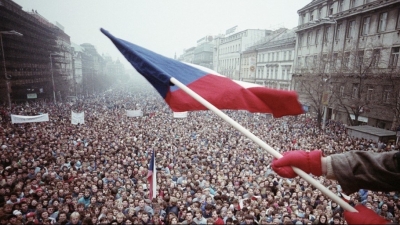
Czechoslovakia, Czech and Slovak ?eskoslovensko, former country in central Europe encompassing the historical lands of Bohemia, Moravia, and Slovakia. Czechoslovakia was formed from several provinces of the collapsing empire of Austria-Hungary in 1918, at the end of World War I. In the interwar period it became the most prosperous and politically stable state in Eastern Europe. It was occupied by Nazi Germany in 1938–45 and was under Soviet domination from 1948 to 1989. On January 1, 1993, Czechoslovakia separated peacefully into two new countries, the Czech Republic and Slovakia.
Many Czechs and Slovaks desired the continued existence of a federal Czechoslovakia. A slight majority of Slovaks, however, advocated a looser form of co-existence or complete independence and sovereignty. In the next years, political parties reemerged, but Czech parties had little or no presence in Slovakia, and vice versa. In order to have a functional state, the government demanded continued control from Prague, while Slovaks continued to ask for decentralization.
Václav Klaus was first among the Czechs who supported separation as an alternative to the constant bickering that prevailed at the time. He approached Vladimír Me?iar and suggested, “Let us work together on Velvet separation.”
In 1992, the Czech public elected Václav Klaus and others who demanded either an even tighter federation (“viable federation”) or two independent states. Vladimír Me?iar and other leading Slovak politicians of the day wanted a kind of confederation. The two sides opened frequent and intense negotiations in June. On July 17, the Slovak parliament adopted the Declaration of independence of the Slovak nation. Six days later, politicians decided to dissolve Czechoslovakia at a meeting in Bratislava.
The goal of negotiations switched to achieving a peaceful division. On November 13, the Federal Assembly passed Constitution Act 541 which settled the division of property between the Czech lands and Slovakia. With Constitution Act 542, passed on November 25, they agreed to the dissolution of Czechoslovakia as of December 31, 1992.
The separation occurred without violence, and was, thus, said to be “velvet,” much like the “Velvet revolution” which preceded it, which was accomplished through massive peaceful demonstrations and actions. In contrast, other post-communist break-ups (such as the Soviet Union and Yugoslavia) involved violent conflict.
Picture Credit : Google



